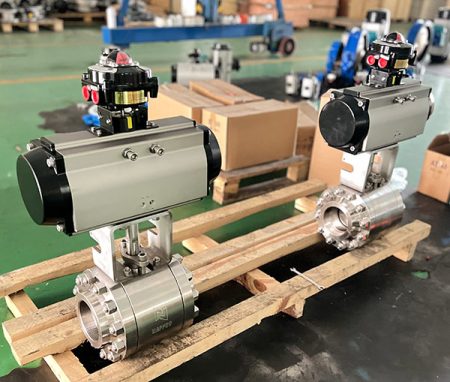
Selecting the right pneumatic actuator valve for your system means you need to think about some important things. You should always begin with what your application needs. These needs include the type of media, flow pressure, and actuator type.
Other important things to think about are:
- Make sure the valve works with your system and pick the right actuator, like single-acting or double-acting.
- Check how much force or torque the actuator valve must give for it to work well.
- Think about the environment, like temperature, chemicals, and humidity.
- Think about safety, especially if your workplace is dangerous.
- Think about cost, how easy it is to fix, and how much space you have.
You should pick an actuator valve that matches your system’s needs. If you need a pneumatic ball valve or a valve actuator for your work, look at the power source and compare it to other choices, like an electric ball valve. This helps you make sure the actuator is right for your job.
Pneumatic Actuator Valve Basics
What Is a Pneumatic Actuator Valve
A pneumatic actuator valve uses air under pressure to move. This movement opens or closes the valve. The actuator changes air pressure into straight or turning motion. Inside, it pushes a piston, diaphragm, or vane. When air comes in through a supply port, it moves these parts. The air leaves through an exhaust port. This lets you control the valve’s position. You can also control the flow of air or other media.
- A pneumatic actuator valve can be single-acting or double-acting.
- Single-acting actuators use a spring to return the valve when air stops.
- Double-acting actuators use air to open and close the valve.
- These actuator valves help with flow control, process control, and safety in many industries.
Pneumatic actuators are safe and reliable for automating valves. They work well where fire or sparks could be a problem. Their simple design makes them strong and easy to care for.
Types of Actuator Valves
There are several main types of pneumatic actuator valves. Each type is good for different jobs and movements.
Rotary
Rotary pneumatic actuators turn the valve. You use them for quarter-turn valves like ball and butterfly valves. These actuators include vane, rack and pinion, and scotch yoke types. Rotary actuators are good for fast and exact valve movement.
Linear
Linear pneumatic actuators move in a straight line. You use them for valves that need straight movement, like globe valves. Diaphragm and piston actuators are common linear types. These actuators give strong force and long travel. This is important for control valves in factories.
Single-Acting
Single-acting actuators use air to move the valve one way. A spring pushes the valve back when air stops. This design is a fail-safe, which helps keep things safe.
Double-Acting
Double-acting actuators use air to move the valve both ways. You get more control and faster action with this type. Double-acting actuators are used when you need exact and steady valve movement.
Here is a table that shows the main types of pneumatic actuators and what they are used for:
| Pneumatic Actuator Type | Working Principle Summary | Typical Industrial Applications |
|---|---|---|
| Diaphragm Actuator | Air moves a diaphragm to push the valve stem; single or double-acting | Flow control valves in food, medicine, wastewater, chemical work |
| Piston Actuator | Air moves a piston for strong straight motion; single or double-acting | Valves needing high force and long stem travel |
| Rack and Pinion Actuator | Changes straight piston motion into turning motion | Quarter-turn valves in automation, mixing, feeding, positioning |
| Vane Actuator | Air pushes a vane for turning motion | Rotary valves like butterfly or ball valves; tight spaces |
| Scotch Yoke Actuator | Changes straight piston motion into turning motion | Large quarter-turn valves in oil, gas, and power plants |
Role in Automation
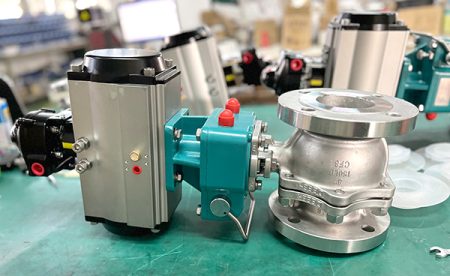
Pneumatic actuator valves are important in automation. You use them to control air flow and direction in machines. These valves help you get accurate movement and control. They also have safety features, like fail-safe positions if power goes out. Pneumatic actuators work well in tough places where electric actuators might not.
They save energy by reducing air leaks and keeping system pressure right. Pneumatic actuator valves help with real-time monitoring and automation when you add sensors and digital controls. This makes your work faster and cuts down on machine stops.
Tip: Pneumatic actuators need little care and work well, even in places with water, dust, or very hot or cold temperatures.
Application-Specific Requirements
Load and Force
When picking an actuator valve, you need to know the load and force. These help you make sure the actuator can move the valve safely. You must check both static and dynamic loads. Static loads do not change. Dynamic loads change as the valve moves.
Here is how you can find the right load and force:
- Find all loads on the actuator. This includes static and dynamic loads.
- Figure out the total force needed to move these loads. Use the formula F = ma, which means force equals mass times acceleration.
- Add extra force for safety. This helps if something changes or goes wrong.
You also need to think about which way the force goes. Some actuators push, some pull, and some do both. The stroke length is how far the actuator moves the valve. You should check how fast the actuator must move and how often it will work. The life cycle is how long you want the actuator to last.
Other things to think about are:
- How you attach the actuator to the valve.
- Safety features, like manual overrides.
- The environment, such as temperature, moisture, or vibration.
- The space you have for putting it in.
- The type of power supply you have.
- If you need feedback for speed or position.
Tip: The force to open or close a valve depends on the valve size, design, stem friction, and pressure difference. Always check the lowest and highest air supply pressure for your actuator valve.
Motion Type
The motion type is very important when you pick an actuator valve. You must match the actuator’s movement to the valve’s needs. There are two main types: rotary and linear.
Rotary
Rotary actuators make turning motion. You use them for valves that turn, like ball, butterfly, or plug valves. These actuators make torque, which is the force that turns things. Rotary actuators are good for small spaces or when you need fast turning. Many factories use rotary actuators for quick and steady control.
| Aspect | Rotary Actuators | Linear Actuators |
|---|---|---|
| Motion Type | Rotational (e.g., 90°, 180°, 360°) | Linear (straight-line movement) |
| Suitable Valve Types | Ball, butterfly, plug valves | Gate, globe, pinch valves |
| Force Output | Torque for rotation | Linear force for push-pull |
| Application Notes | Compact, good for tight spaces and fast action | Precise positioning, good for accurate movement |
| Conversion | Can convert to linear with linkages | N/A |
Linear
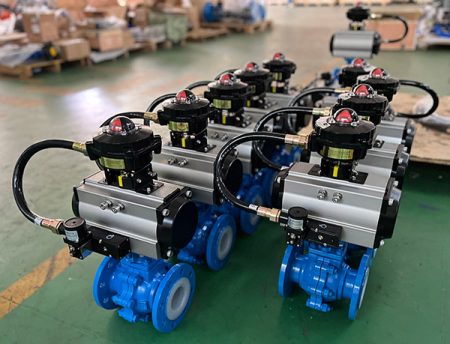
Linear actuators move in a straight line. You use them for valves that need push-pull action, like gate, globe, or pinch valves. Linear actuators let you control how far the valve moves. This is important when you need to control flow very well. Linear actuators can also move fast and handle big forces.
Note: Always match the actuator’s motion type to the valve’s design. This helps your actuator valve work well and last longer.
Fluid Type
The fluid you control with your actuator valve matters. Pneumatic actuators use air as power. These actuators are best for fast valve control in air or gas systems. You often see pneumatic actuator valves in factories where you need quick open-close action.
If you need to control liquids like water or oil, you might use a hydraulic actuator. Hydraulic actuators give more force, which is good for big valves or high-pressure systems. The fluid type also changes what materials you pick for the valve and actuator. Some fluids can cause damage, so you need strong materials.
You must also check the air supply pressure for pneumatic actuators. Most actuator valves need air pressure between 40 and 120 psi. If your system has lower air pressure, you may need a bigger actuator to get enough force. Always make sure the valve and actuator materials match the fluid to stop leaks or damage.
Remember: The best actuator valve for your job depends on the fluid type, the pressure in your system, and the materials that can handle your media.
Valve Duty
Valve duty tells you how often and how long a valve works compared to how much time it rests. You call this the duty cycle. If you use a valve more often, it has a higher duty cycle. This means the actuator works harder and wears out faster. You need to think about how many times your valve will open and close each day.
- Valve duty cycle is the ratio of how long the actuator runs to how long it rests. This number shows how much work the actuator does.
- If your valve works a lot, it will wear out faster. The inside parts can break down from too much use.
- Electric actuators can get too hot if you use them too much. The motor and wires inside can get damaged.
- Pneumatic actuators do not have electric motors. They use air and simple moving parts. This makes them better for jobs where the valve moves a lot.
- Pneumatic actuators can handle high temperatures and tough jobs better than electric ones. They work well in places where you need to open and close valves many times.
If you pick the right actuator for your valve duty, your system will last longer and work better. Always check how often your valve will move before you choose an actuator. Pneumatic actuators are a good choice for busy systems because they do not overheat and can handle more cycles.
Tip: If your system needs to open and close valves all day, choose a pneumatic actuator. It will last longer and need less fixing than an electric one.
Working Space
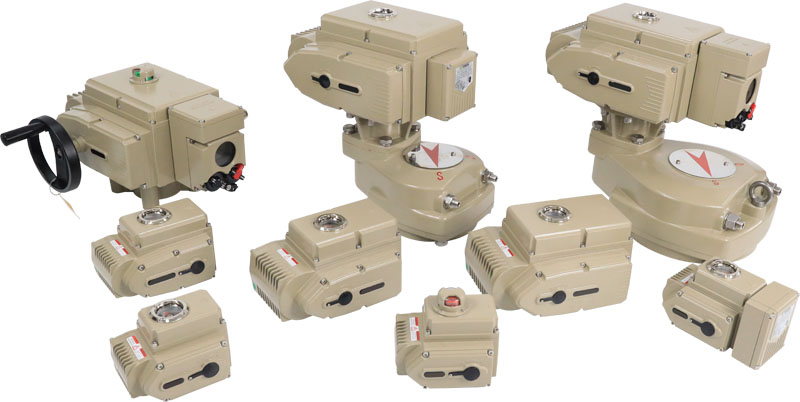
You must look at the space where you want to put your pneumatic actuator valve. Some places have very little room. You might need to fit valves behind machines, between floors, or in tight corners. Picking the right design helps you save space and makes it easier to fix or check the valve later.
- Extended stem valves work well in tight spots. You can put the actuator in a place that is easy to reach, even if the valve itself is hard to get to.
- This setup lets you do repairs or checks without taking apart other equipment or crawling into small spaces. It keeps workers safer and saves time.
- You can use long drive shafts to connect the actuator to the valve. This helps you put the actuator in a better spot.
- Compact actuator designs, like helical slot actuators, take up less space. They let you put more valves close together or near walls and tanks.
- In places like ships or factories with lots of pipes, you need to keep the footprint small. Compact valves and actuators help you fit everything in.
- Always make sure you can reach the actuator for maintenance. Good design lets you check or fix the valve without moving other parts.
Note: When you plan your system, think about how much space you have and how easy it will be to reach the actuator. Choosing the right valve and actuator design makes your system safer and easier to maintain.
Actuator Valve Sizing and Selection
Valve Type Considerations
When you pick an actuator valve, first look at your valve type. Ball, butterfly, and globe valves all need different actuators. Each valve type has its own flow, price, and sizing needs.
- Quarter-turn valves, like ball and butterfly, need actuators for break, running, and seating torque. These torque numbers change with the valve design and what flows inside.
- Globe valves need more control and work with many flow types. You usually pick an actuator one size smaller than the pipe.
- Ball valves let lots of flow through and are not very noisy. You often pick an actuator two sizes smaller than the pipe.
- Butterfly valves cost less, especially when big, but do not have as much range and can get damaged by bubbles. You also pick an actuator two sizes smaller than the pipe.
Here is a table to help you compare the main valve types:
| Valve Type | Flow Characteristics & Capacity | Cost Comparison | Typical Actuator Sizing Relative to Line Size |
|---|---|---|---|
| Globe Valves | Wide range of flow; good for noise and cavitation reduction | Most expensive | Usually one size smaller than the line |
| Ball Valves | High flow capacity; less noise than butterfly | Less expensive than globe | Usually two sizes smaller than the line |
| Butterfly Valves | Less rangeability; more prone to cavitation | Least expensive, especially for large sizes | Usually two sizes smaller than the line |
You also need to think about actuator type. Rack-and-pinion actuators give steady torque. Scotch yoke actuators give more torque at the start and end. Spring-return actuators lose torque at the ends. Always make sure the actuator’s lowest torque is more than the valve’s highest torque need. This stops the valve from not moving all the way or breaking.
Tip: Always check if the actuator and valve fit together, like using ISO 5211 mounts, so they work right in your system.
Valve Size
Valve size is very important when picking an actuator. Bigger valves need more force or torque to move. You must know your valve’s size before picking an actuator. If the actuator is too small, the valve may not open or close. If it is too big, you waste energy and money.
Industry rules, like ANSI/ISA-75.01.01 and IEC 60534-2-1, help you size valves. These rules help you:
- List key things, like valve type, fluid, and how it will be used.
- Find constants for your unit system.
- Figure out pipe shape and pressure recovery.
- Check pressure drops to stop choked flow.
- Work out the flow number (Cv) to pick the right valve size.
Always follow these steps to make sure your actuator valve fits your job. This helps you avoid mistakes, like picking a valve that is too small or too big, which can cause problems or cost more.
Note: Good sizing keeps your system safe and working well. Always use data from the maker and check your math.
Torque and Force
You must figure out the torque and force your actuator valve needs. Torque is the turning force to move the valve. Force is the push or pull for straight-moving valves. Both depend on valve size, type, and what is inside.
Here is an easy way to find the torque and force you need:
- Find the valve size and type. Bigger valves need more torque.
- Check the working pressure. Make sure the actuator can give enough torque.
- Think about how fast or often the valve must move. The actuator must open and close the valve in time.
- Add a safety factor. Multiply your torque by at least 1.2 to cover extra friction or pressure changes.
- Use data from the maker and ask experts to check your numbers.
- Make sure the actuator’s torque matches the valve’s needs. This stops problems or damage.
You can split the total force into parts:
| Force Component | Description |
|---|---|
| A | Force to move the valve disc when it is still |
| B | Force to close the valve seat |
| C | Force to beat packing friction |
| D | Extra force from special jobs or valve shape |
Total needed force = A + B + C + D
Safety Alert: Always add a safety factor to your math. This keeps your system safe from sudden pressure or flow changes. It also helps stop actuator or valve problems.
You should always talk to experts and use technical guides when sizing your actuator valve. This makes sure your actuator will work safely and well in your system.
Safety Factor
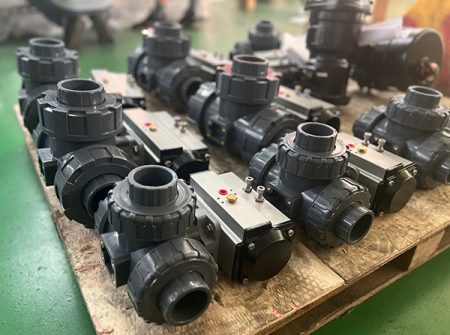
You always need to add a safety factor when sizing an actuator valve. The safety factor keeps your system safe from surprises. Sometimes, the valve gets more pressure or friction than you thought. If you do not plan for this, the actuator valve could stop working.
A safety factor means you give the actuator valve extra force or torque. This extra power helps if something in your system changes. Think of it as a backup plan. Most experts say to use a safety factor between 1.2 and 1.5. You multiply your needed force or torque by this number.
Here is an easy example:
| Step | Description |
|---|---|
| 1. Calculate Need | Find out how much force or torque you need |
| 2. Add Safety Factor | Multiply by 1.2 to 1.5 for extra safety |
| 3. Select Actuator | Pick an actuator valve that meets this number |
Tip: Always check what the manufacturer says about safety factors. Some valves need a bigger safety factor for sticky fluids or high pressure.
You should also think about other safety features. Make sure the actuator valve has things like manual overrides or fail-safe spots. These help keep your system safe if the air stops or there is an emergency. Safety is not just about numbers. It is about making sure your valve works when you really need it.
Valve Type Compatibility
You must make sure your actuator valve fits your process needs. If you pick the wrong type, your valve may not work right or could be unsafe. You can use steps to check if the valve is a good match:
- Check your power source. Make sure it is right for your actuator valve, like pneumatic, electric, or hydraulic.
- Decide what you want your valve to do. If you need on/off control, pick an actuator valve that opens and closes fast. If you need to control flow, choose one that moves smoothly.
- Look at the valve size and the fluid. Make sure the actuator valve gives enough torque or thrust. Do not pick one that is too weak or too strong.
- Think about safety. Make sure your actuator valve follows all safety rules. Look for fail-safe features that protect your system if something goes wrong.
- Make sure your actuator valve works with your control system. It should connect easily to your signals and devices.
You should also check the process conditions. Look at the temperature and pressure ranges. If you need exact control, pick an actuator valve that holds the valve in the right spot every time. Check how fast the actuator valve moves and how accurate it is. Some actuator valves are better for quick moves, while others are best for steady control.
Here is a table to help you match actuator valve types to your needs:
| Process Need | Best Actuator Valve Type | Key Features to Check |
|---|---|---|
| Fast on/off | Pneumatic or electric | Quick response, fail-safe |
| Precise flow control | Pneumatic or hydraulic | Smooth movement, accuracy |
| High pressure/temperature | Hydraulic | Strong force, safety features |
| Simple integration | Pneumatic | Easy to connect, reliable |
Note: Always look at your process needs before picking an actuator valve. This helps you avoid trouble and keeps your system safe.
If you follow these steps, you can match your actuator valve to your process. This helps your system work better and keeps everyone safe.
Pneumatic Actuators and System Compatibility
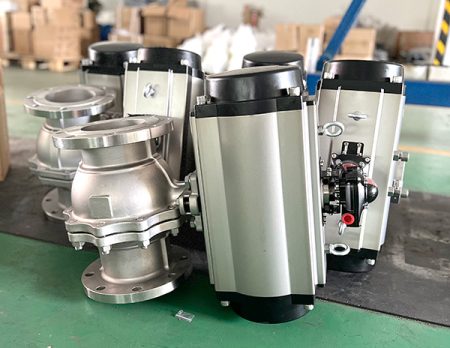
Air Supply Pressure
You must check the air supply pressure before picking pneumatic actuators. The right pressure helps the actuator work well and last longer. If the pressure is too low, the actuator might not move the valve. If the pressure is too high, it can break the actuator or other parts.
Here is a table that shows the usual air supply pressure ranges for pneumatic actuators:
| Pressure Type | Pressure Range (psi/bar) | Notes |
|---|---|---|
| Minimum | 40–60 psi (2.5–4 bar) | Needed to beat friction and move the load |
| Optimal Operating | 60–100 psi (4–7 bar) | Best for steady and reliable work |
| Maximum | Up to 150 psi (10 bar) | Only for special actuators; needs strong parts and extra safety |
You should always know the lowest and highest air supply pressure for your actuator. Using a relief valve keeps the actuator safe from too much pressure. If you use more pressure than needed, the actuator can push too hard and break the valve. Always ask an expert to help match the actuator to your air supply.
Tip: Always pick your actuator based on the lowest air pressure you expect in your system. This keeps your system safe and working well.
Air Quality
Air quality is very important for pneumatic actuators. Clean, dry air helps the actuator last longer and work better. Dust, dirt, and water can cause many problems inside the actuator.
- Dust and tiny bits can wear out the inside of the actuator. This makes it work less well and can make it stick.
- Water in the air can cause rust and sludge inside the actuator. This makes the actuator weak and can make it stop working.
- Oil or chemical vapors in the air can hurt seals and other parts. This can cause leaks and more repairs.
- Cold weather can freeze water in the actuator, blocking air and stopping movement.
You can protect your pneumatic actuators by using air filters, dryers, and regulators. These tools keep the air clean and dry. You should also use special coatings and strong materials if your system works in tough places. Regular care, like cleaning and checking seals, helps stop problems.
Note: Good air quality means you fix your actuator less and your pneumatic system works better.
Control System Integration
You need to make sure your pneumatic actuators work with your control system. Many systems use PLCs, SCADA, or HMI panels to control actuators. Good setup helps you get fast, safe, and accurate valve control.
Here are some best ways to connect pneumatic actuators with your control system:
- Install and set up the actuator the right way. Make sure all air and electric connections are tight. Calibrate valve positioners for correct movement.
- Use control programs like PID to get smooth and steady valve action. Change the settings to fit your system.
- Plan regular care. Check how the actuator moves, oil the parts, and update software when needed. Use built-in checks to find problems early.
- Connect your actuators to SCADA or HMI panels. This lets you see status, alarms, and make changes from far away.
- Use modular valve manifolds and safety tools like pilot air shutoff valves. These help you control power and keep your system safe during shutdowns.
Tip: Good setup between your pneumatic actuators and control system makes your whole system work better and easier to run.
Performance and Control
Speed
You need your actuator to move at the right speed. The speed depends on a few things. Higher air pressure makes the actuator move faster. Bigger actuators and smart designs also help it go quicker. If the load is heavy, the actuator will slow down. More airflow and fewer blockages make it move faster. Control valves and regulators let you change the speed. Temperature and the environment can affect how fast it works. If there is extra pressure after beating resistance, the actuator moves faster.
You can change the speed by adjusting air pressure and throttle valves. Quick exhaust valves help air leave faster, so the cycle is shorter. If you use silencers, pick ones that do not block air too much. Solenoid valves with the right voltage, like 24VDC, help the actuator respond faster. Advanced controls, like positioners and proportional valves, let you fine-tune the speed. Keep the actuator working well by checking lubrication and seals. Some jobs need special setups, like dual solenoid valves for fast cycles.
Tip: Always set the actuator speed to match your process. If it is too fast or too slow, you can have problems.
Positioning Accuracy
Your actuator must stop in the right place every time. Positioning accuracy means the actuator moves the valve to the exact spot you want. Closed-loop feedback systems help with this job. These systems check where the valve is and compare it to where it should be. If it is wrong, the system fixes it right away.
Sensors, like potentiometric, magnetic, or optical encoders, measure the valve’s spot. Modern valve positioners can be very accurate, within ±0.25% of full scale. They block out things like shaking or electrical noise. Smart control systems, like auto-tuning, help the actuator move quickly and fix errors like friction or dead band.
Digital positioners make accuracy even better. They use sensors that do not wear out. Some can measure as close as 0.004 inches. You can change settings for different actuator types. Many digital positioners also give you online checks. These tools warn you about problems, like seat wear or leaks, before they get worse. This keeps your system running well and helps you plan repairs.
Note: If you need high precision, pick actuators with digital positioners and feedback systems.
Modulation Options
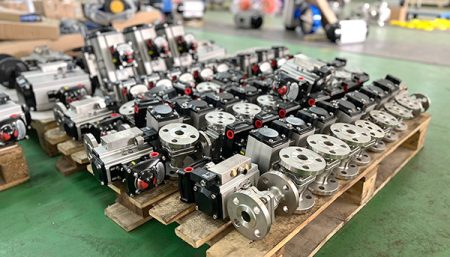
You can choose from many modulation options for your pneumatic actuator. These options help you control how the actuator works in your system.
- Pilot valves (solenoid valves): Double-acting actuators use four-way or five-ported valves. Spring-return actuators use three-way valves. You can put these valves far away, close by, or right on the actuator.
- Material choices: Aluminum, bronze, or stainless steel pilot valves work in different places.
- Coil options: Pick the right voltage and temperature class for your job.
- Manual overrides: Some pilot valves let you move the actuator by hand if needed.
- Speed control valves and exhaust port fittings: These help you set how fast the actuator moves.
Pneumatic positioners compare the control signal to the valve’s spot. This lets you move the valve to any position, not just open or closed. You get better flow control and can stop problems like deadband or hysteresis. Limit switches, manual overrides, and other add-ons give you more control and safety.
These modulation options help you:
- Set the actuator’s speed and response time.
- Make your system safer with fail-safe modes.
- Help your system work better and last longer.
- Connect easily with electronic controls and sensors.
Remember: The right modulation options let you set up your actuator for your process. This makes your system safer and more exact.
Durability and Environment
Material Selection
You must pick the right materials for your pneumatic actuator valve. The material you choose helps the valve last longer. This is very important in tough or corrosive places. Stainless steel, like 316L, is a great choice for valve bodies. It does not rust from chemicals or water. This makes it good for use in marine and chemical plants. For even harder jobs, you can use alloys such as Hastelloy or Monel. These can handle strong acids and seawater.
Plastics like polypropylene (PP) and polyvinyl chloride (PVC) are good for easier jobs. They resist many chemicals and cost less money. Inside the valve, you might see ceramics or tungsten carbide. These make the valve harder and more stable with chemicals. Seals are also important for how long the valve lasts. PTFE and perfluoroelastomer (FFKM) work well with strong acids. EPDM is best for bases, and FKM is good for organic solvents. Surface coatings like chrome plating or epoxy give more protection. You should also look for strong seals and high IP ratings to keep out dust and water.
Tip: Always pick materials that match your process and environment. This helps your actuator valve last longer.
Environmental Resistance
Your pneumatic actuator valve must work well in tough places. Outdoor and dangerous areas have extra problems. You want your valve to block dust, water, and very hot or cold weather. Pneumatic actuators do not make sparks, so they are safer in places with fire risk. They work in both hot and cold, but sometimes need extra help in very harsh spots.
Here are some things that help valves resist tough environments:
- Use materials that do not rust, like stainless steel or special alloys.
- Pick seals made from FKM, HNBR, or PTFE to stop dust, dirt, and chemicals.
- Look for high IP ratings, like IP66 or IP67, to keep out water and dust.
- Choose valves with strong mounts and tough inside parts for shaking and bumps.
- Make sure your actuator valve meets safety rules for dangerous places.
A table can help you see what to check:
| Feature | Benefit |
|---|---|
| Corrosion-resistant body | Lasts longer in tough places |
| Advanced sealing | Stops leaks and blocks dirt and chemicals |
| High IP rating | Keeps out dust and water |
| Sturdy construction | Handles shaking and hard hits |
| Certified for hazards | Safe in places with fire or explosions |
Note: Good resistance to the environment means your valve will last longer and need less fixing, even in hard places.
Certifications
Certifications show your pneumatic actuator valve is safe and high quality. In some jobs, like food or medicine, you must use valves with the right certifications. ISO 5211 is for how actuators fit on valves. ATEX means the valve is safe in places with explosion risk.
For food and drink, look for the 3-A sanitary symbol. This means the valve is clean and safe for food. Some actuator valves have IP66, which keeps out dust and water. In medicine, you may need special designs with tight seals to keep out germs.
Remember: Certifications help you follow the law and keep your process safe. Always check for the right marks before you put in a new actuator valve.
If you focus on picking the right materials, making sure the valve can handle tough places, and checking for certifications, your pneumatic actuator valve will last longer. Thinking about durability and the environment helps your system stay safe and work well for many years.
Safety and Fail-Safe
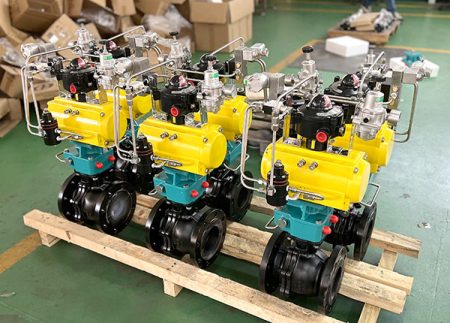
Fail-Safe Mechanisms
It is important to have a strong fail-safe system. This keeps your equipment and people safe if something fails. If you lose air or power, the fail-safe moves the valve to a safe spot. How it works depends on the actuator and valve you use. Spring-return actuators have a spring that moves the valve when air drops. The valve goes to a set spot, like open or closed. This happens quickly and does not need extra power. Some actuators use a lock-up valve to trap air. This holds the valve in place if air stops. Dual-acting actuators without springs may keep the valve where it is for a short time. But this is not always the safest way.
Here is a table that shows the main fail-safe types and how they work:
| Fail-Safe Mechanism Type | What Happens During Power or Air Loss | Example Fail Mode | Key Features and Uses |
|---|---|---|---|
| Spring-Return Actuators | Spring moves valve to safe position | Fail-close or fail-open | Simple, fast, no outside energy needed |
| Dual-Air Supply with Lock-Up | Air is trapped to hold valve in place | Maintains position | Good for short-term holding |
| Hydraulic or Gas-Accumulator Backup | Stored fluid moves valve to safe position | Fail-close or fail-open | Used for big valves needing more force |
| Electrically Driven Reset (Hybrid) | Battery or capacitor moves valve to safe spot | Fail-close or fail-open | Combines electric and pneumatic features |
Tip: Pick a fail-safe design that fits your process. Always think about what is safest if you lose air or power.
Emergency Shutdown
You need a plan for emergencies. Emergency shutdown (ESD) keeps people and equipment safe. ESD starts when sensors find a problem, like high pressure or leaks. The sensors send signals to a safety system, such as a PLC or SIS. The safety system checks the signals and decides what to do. If a shutdown is needed, it sends a command to the actuator. The fail-safe then closes the valve fast to stop flow. Spring-return actuators are used for ESD because they close the valve even if air or power is lost. Solenoid valves control air to the actuator and must be safe for dangerous places.
You can follow these steps for an emergency shutdown:
- Sensors find a problem in the system.
- The safety system gets the signal and checks if shutdown is needed.
- The system sends a command to the actuator valve.
- The actuator uses its fail-safe to close the valve quickly.
- Limit switches or transmitters check if the valve is closed and send feedback to the control room.
- The valve stays closed until someone checks and restarts the system safely.
Note: Rules say the valve should close in about one second for each inch of valve size. Always add extra force to the actuator to make sure it works every time.
A good fail-safe and emergency shutdown plan protects your plant, workers, and the environment. Test these systems often to make sure they work when needed.
Cost and Maintenance
Initial Cost
When picking a pneumatic actuator valve, you should think about how much it costs at first. Prices can be as low as $100 or as high as $2,000. The size of the valve changes the price. Small valves cost less than big ones. If you need a valve for high-pressure jobs, it will cost more. Valves for special jobs, like food processing, also cost more. The materials and pressure ratings can change the price too. Extra features, like certifications, can make the valve cost more. Pneumatic actuator valves usually cost less than electric or hydraulic ones. Always ask the supplier for the exact price. Project needs and details can change the cost a lot.
Tip: Make a budget and write down what your system needs. This helps you not pay for things you do not need.
Operating Cost
You also need to think about how much it costs to use your pneumatic actuator valve over time. Pneumatic actuators use compressed air, which is not always very efficient. Air leaks and compressor problems can make your energy bills go up. Even a small leak can waste a lot of money each year. Electric actuators use energy better and need less fixing, so they can cost less to use over five years. Hydraulic actuators cost the most to run because they need more care and use more energy.
Here is a table to help you compare costs over five years:
| Factor | Pneumatic Actuators | Electric Actuators | Hydraulic Actuators |
|---|---|---|---|
| Initial Cost | Lower unit cost, but higher system cost for compressors and air supply | Higher cost at first | Highest cost at first |
| Energy Efficiency | Low (10-30%), about 20%, lots of loss from leaks and compressor problems | High (~80%), stays steady | Not very efficient and costs more |
| Maintenance Requirements | Need to fix seals, compressors, and air system often; seals can wear out and cause problems | Need little fixing, last a long time | Need the most fixing |
| Operating Cost Over 5 Years | Higher because of leaks and compressor problems | Lower because they save energy and need less fixing | Highest cost to run |
| Total Cost of Ownership | Higher after 5 years, even if cheaper at first | Lower after 5 years because of energy savings and less fixing | Highest cost because of fixing and energy |
Think about how much you use your actuator. If you use it a lot, energy costs can get high. Electric actuators may save you money if you want lower bills and less downtime.
Maintenance Needs

Taking care of your pneumatic actuator valve is important. Doing regular checks helps you stop problems and keeps your system working. Here are some things you should do:
- Look for leaks inside and outside the valve.
- Change old seals so air does not leak out.
- Clean out dirt from the air lines so air flows well.
- Check the valve packing for damage.
- Watch for the valve getting stuck or moving slowly.
- Remove water and dirt to stop rust and damage.
- Oil the moving parts when needed.
If you skip these jobs, your valve may break more often and stop your system. Dust, dirt, and changes in temperature can wear out parts faster. Cleaning and checking your valve often helps it last longer. You should also have a plan to fix things fast. This helps stop your whole system from shutting down.
Note: Good care lowers your costs over time. It also keeps your system safe and working well.
Integration and Add-Ons
Valve Positioners
Valve positioners help your pneumatic actuators work better. They make sure the valve moves to the right spot. The positioner gets a control signal and changes the air sent to the actuator. This helps the valve open or close just enough. You can use positioners with rotary or linear valves. They are good when you need the flow to be very exact.
There are two main kinds of positioners: analog and digital. Analog positioners use air signals. Digital positioners use electric signals. Digital ones have more features, like checking from far away and finding problems by themselves. You can add smart sensors to watch the valve’s health. This helps you fix things before they break.
Tip: For better accuracy and less downtime, use a valve positioner with your pneumatic actuator.
Limit Switch Boxes
Limit switch boxes show if a valve is open or closed. You put the box on the actuator. Inside, switches move when the valve moves. The box sends a signal to your control system. This tells you the valve’s position right away.
Pick a limit switch box that fits your valve and actuator. Choose strong boxes for tough places. Some boxes have lights to show if the valve is open or closed. Others have sensors for more exact feedback. Limit switch boxes help keep your system safe. They also help you find problems quickly.
Here is a table to help you pick a limit switch box:
| Feature | Why It Matters |
|---|---|
| Housing strength | Protects in harsh environments |
| Visual indicators | Easy to see valve position |
| Sensor options | Gives more accurate feedback |
| Easy wiring | Simple to connect to your system |
Pneumatic Solenoid Valve
A pneumatic solenoid valve controls the air for your actuators. You use a solenoid valve to start or stop the air flow. When you send an electric signal, the solenoid opens or closes the valve. This lets air move to the actuator or stops it.
Pick a solenoid valve that matches your system’s needs. Check the voltage, air pressure, and flow rate. Make sure the valve works with your actuator and control system. Some solenoid valves have manual overrides. This lets you move the actuator by hand if needed. You can also get valves with special seals for tough places.
Note: Always test your solenoid valve after you install it. This helps you avoid problems and keeps your pneumatic system working well.
Manual Handwheel Overrides
Manual handwheel overrides let you move the valve by hand. You use them if the pneumatic system stops working. You can open or close the valve yourself. This is important for safety and fixing things. If you lose air or power, you do not have to wait. You can keep things running or make the valve safe.
There are two main kinds of manual overrides:
- Direct-mount handwheels: You turn the handwheel right on the actuator. This type is simple and easy to use.
- Declutchable handwheels: You pull a lever or push a button to switch from automatic to manual mode. This design stops the actuator from moving while you use the handwheel.
When picking a manual handwheel override, look at these things:
| Selection Criteria | Why It Matters |
|---|---|
| Ease of operation | You need to move the valve without much effort |
| Safety features | The override should not let the valve move by accident |
| Compatibility | The handwheel must fit your actuator and valve |
| Accessibility | You should reach the handwheel easily, even in tight spaces |
Tip: Test the manual override when you set it up. Make sure everyone knows how to use it in an emergency.
Manual handwheel overrides help stop downtime. You can use them for regular checks or if you lose power. They give you a backup way to move the valve. This helps you feel safe because you always have control.
Communication Protocols
Communication protocols help your actuator valves send and get information. These protocols let your valves “talk” to your control system. You use them to share data about valve position, status, and health. Good communication makes your system safer and smarter.
You will see some common protocols in pneumatic actuator systems:
- 4-20 mA analog signals: This is a simple and reliable way to send position or control signals.
- HART: This protocol lets you send digital data over the same wires as analog signals. You can get more information without extra wiring.
- Fieldbus (FOUNDATION Fieldbus, Profibus, DeviceNet): These digital networks connect many devices together. You can control and monitor valves, sensors, and other equipment from one place.
- Modbus and Ethernet/IP: These protocols work well for larger systems. You can use them for remote monitoring and advanced diagnostics.
When you pick a communication protocol, check these things:
- Does your control system work with the protocol?
- How much data do you need to send?
- How far is the actuator from the control room?
- Do you need real-time feedback or special checks?
Note: The right protocol helps you find problems early. You can plan repairs before something breaks.
Communication protocols make your system easier to run. You can see valve status, get alerts, and change settings from a computer. This saves time and helps your process work better.
Selection Process Steps

Define Requirements
Start your selection process by defining what your system needs. You should look at every detail of your application. Write down the type of valve you need, the size, and the pressure range. Think about the environment where you will use the actuator valve. Is it hot, cold, wet, or dusty? Make a list of safety needs and any rules you must follow.
A good needs assessment helps you avoid mistakes later. You should answer these questions:
- What kind of fluid will flow through the valve?
- How often will the valve open and close?
- Do you need fast or slow movement?
- What is the maximum pressure and temperature?
- Will the actuator work indoors or outdoors?
Tip: Take your time with this step. The more details you gather, the easier it will be to find the right actuator valve.
Compare Specifications
After you know your requirements, start comparing actuator valve options. Look at the technical data for each product. Check the force or torque, the speed, and the type of motion. Make sure the actuator matches your valve type and size.
You can use a table to compare key features:
| Feature | Option A | Option B | Option C |
|---|---|---|---|
| Valve Size | 2 inch | 3 inch | 2 inch |
| Max Pressure | 100 psi | 150 psi | 120 psi |
| Actuator Type | Rotary | Linear | Rotary |
| Material | Stainless Steel | Aluminum | PVC |
| Certifications | ISO 5211 | ATEX | None |
Check if the actuator has the right certifications for your industry. Look at the cost, but also think about how much it will cost to run and fix over time. Make sure the actuator will fit in your space and work with your control system.
Note: Always compare more than one option. This helps you find the best fit for your needs.
Consult Experts
You should talk to experts before you make your final choice. Valve and actuator suppliers have a lot of experience. They can help you understand technical details and avoid common mistakes. Bring your list of requirements and your comparison table to the meeting. Ask questions about installation, care, and safety.
Experts can also share best practices for industrial actuator selection. They might suggest new products or solutions you have not seen. You can also ask for references or case studies from similar projects.
Tip: Do not be afraid to ask for help. Expert advice can save you time and money.
Test and Validate
Testing and validating your pneumatic actuator valve is a key step before you use it in your system. You want to make sure the valve works as expected and keeps your process safe. Careful testing helps you catch problems early and avoid costly shutdowns.
Start with a good plan. You should always prepare your valve and tools before any test. Clean the valve and check that all test equipment is calibrated. Make sure the valve is put together the right way. This helps you get accurate results.
Set up your valve on a test bench. Secure it so it does not move. Connect all lines and seal any ports you are not testing. If you use water for a hydrostatic test, fill the valve cavity and remove air pockets. For pneumatic tests, use compressed air or an inert gas.
steps
- Record Baseline Data: Write down the valve’s starting position and system settings.
- Partial Stroke Test (PST): Use your control module or PST software to move the valve a small amount, usually 10–20% of its full stroke. This checks if the valve can move and is not stuck.
- Monitor Movement: Watch the valve as it moves. Check for smooth action and listen for odd noises. Smart positioners can give you feedback on valve position and actuator pressure.
- Return and Stabilize: Move the valve back to its original spot. Let the system stabilize and check that all readings return to normal.
- Check for Alarms: Look at your control system for any alarms or warnings. Make sure nothing unusual happened during the test.
- Leak Detection: For pressure tests, slowly increase pressure to the test level. Hold it steady and check for leaks using gauges or by looking for drips.
- Depressurize and Drain: Release pressure slowly and drain any test fluid. Dry the valve if needed.
Tip: Digital positioners let you run partial stroke tests without stopping your process. This saves time and keeps your plant running.
After the test, compare your results with the baseline data. Write down what you found and update your maintenance logs. If you see any problems, fix them before you use the valve in your system. Always follow safety rules and industry standards, like IEC or ISA, to keep your process safe and meet legal requirements.
You should also decide how often to test your valves. High-risk systems may need more frequent checks. Train your team so everyone knows how to run tests and spot issues. Good testing and validation help you trust your actuator valves and keep your system running smoothly.
FAQ
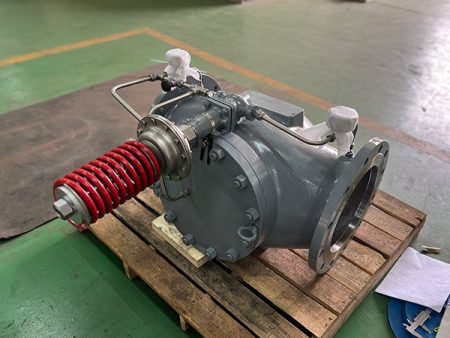
What is the main benefit of using a pneumatic actuator valve?
You get fast and reliable valve movement. Pneumatic actuators work well in tough places. They do not make sparks, so you can use them where fire is a risk. You also spend less time on maintenance.
How do I know which actuator size I need?
You should check your valve size, the pressure in your system, and the force needed to move the valve. Use the manufacturer’s charts or ask an expert. Always add a safety factor for extra protection.
Can I use a pneumatic actuator valve outdoors?
Yes, you can use these valves outdoors. Pick one with a weatherproof body and strong seals. Look for high IP ratings, like IP66 or IP67. These features help block water and dust.
How often should I maintain my pneumatic actuator valve?
Check your valve every few months. Look for leaks, dirt, or worn seals. Clean and oil moving parts as needed. Regular care helps your valve last longer and work better.
What happens if the air supply fails?
Most pneumatic actuators have a fail-safe spring. If you lose air, the spring moves the valve to a safe spot, like fully open or closed. This keeps your system safe.
Do pneumatic actuator valves work with all control systems?
You can connect most pneumatic actuator valves to many control systems. Use positioners, limit switches, or communication protocols like 4-20 mA or HART. Always check that your control system matches the valve’s features.
Are pneumatic actuator valves safe for food or medicine use?
Yes, you can use them in food or medicine plants. Pick valves with the right certifications, like 3-A or FDA. These valves use clean materials and special seals to keep your product safe.
How do I choose between single-acting and double-acting actuators?
Single-acting actuators use a spring for fail-safe action. Double-acting actuators use air to move both ways. Choose single-acting for safety needs. Pick double-acting for more control and faster movement.
